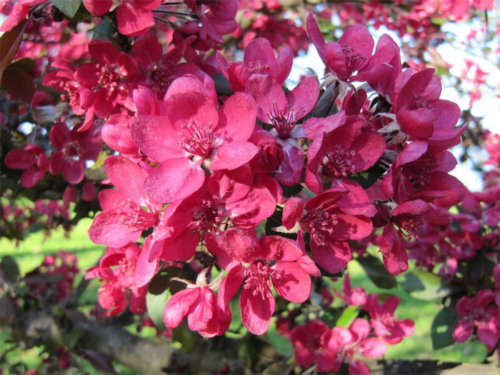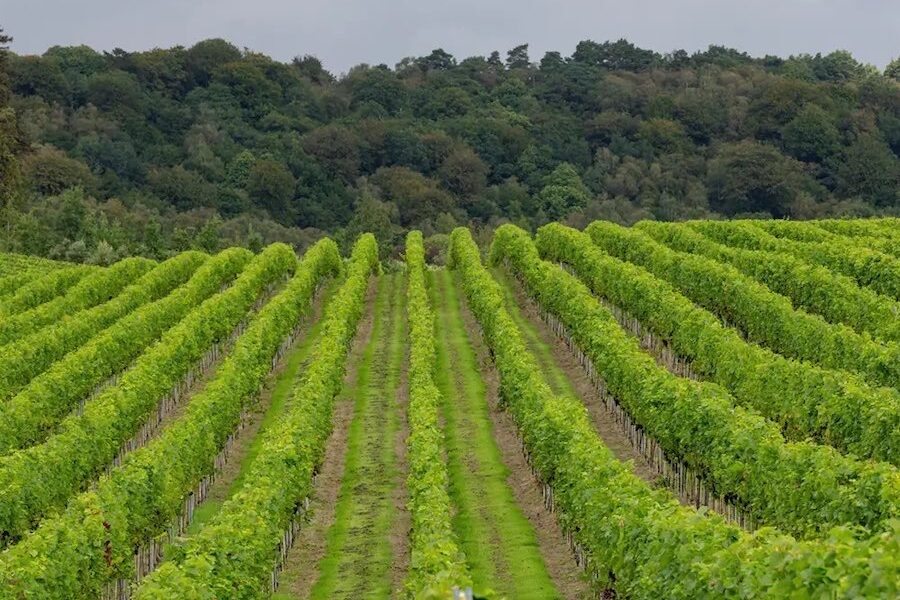
Gardening writer CEDRIC BRYANT has some suggestions of picking the best blossom trees to welcome the spring.
NOW’S the perfect time of the year to plant bare-rooted trees and shrubs and in this column I’ll look at blossom trees that herald spring when they burst into bloom.

The term “bare-rooted” traditionally meant trees grown in wholesale nurseries that were dug up when dormant in winter and delivered to retail garden centres with no soil on the roots.
The garden centres then “healed” them in, placing the trees in trenches and covering the roots with soil to stop them drying. Any unsold trees in winter were potted up for saIe during the year. These days trees are potted up immediately on arrival.
So it’s important to remember that when trees are sold in winter and taken out of the pot, most or all of the potting mix will fall away from the roots. This can be used to mix with existing soil when planting the trees.
- So let’s start with flowering apricots that come into flower at this time of the year and as early as mid-June.
- Prunus mume Rosebud is an upright branching, low, bushy, small tree to 4m x 4m. The large soft pink semi-double flowers are delicately fragrant.
- Its cousin Splendens grows to 4m x 3.5m in a vase shape and has double, deep-pink flowers with yellow stamens. Its fragrance is particularly noticeable in the evenings. Flowering in late winter to early spring, both these plants are highly recommended.
- To avoid confusion, the Prunus family includes flowering plums, apricots, cherries, almonds and peaches. A really low-growing cherry is Prunus Kojo-no-mai (1.5m x 1.5m), which is also ideal for container growing. It has distinctive twisted and bending zig-zag branches with pendulous rosy-red buds opening to single white flowers, which appear in pairs on the branches in spring, often with a pink tinge.
- Prunus persica Magnifica is the perfect name for this spectacular flowering peach, growing 4m x 3m. Its double, crimson-red flowers of up to four centimetres across almost completely cover the bare branches in spring.

UNFORTUNATELY, blossom trees have rarely been planted as street trees resulting in a boring sameness, for example most of Belconnen has eucalypts as the predominant trees. Compare this to the older suburbs when Charles Weston was laying out the street-tree planting in suburbs such as Red Hill and Forrest.
Flowering plums were used extensively in early street plantings in Antill Street and on Flinders Way, Griffith (where it was alternated with Prunus nigra and Crataegus, or flowering hawthorn, to present a spectacular display in spring).
This demonstrates how new suburbs could look alternated with native Callistemons or Melaleuca. Although both these grow to more than five metres, Crataegus Rosea Flore Pleno only grows to 3.5m x 3m with rose-pink flowers appearing as the leaves are almost fully grown. This sets the flowers off perfectly against the dark green leaves.
MALUS or crabapples are a large family with amazing blossoms followed by fruit. For example Malus Gorgeous growing to just 3m x 3m. Its pink buds open to white-pink flowers followed by bright-red fruit in autumn. The fruit is ideal for making crabapple jelly.
My final suggestion is Malus hamzam Hamlet growing to just 3m x 2m. Perfect for the small garden with scarlet buds that open to rosy-pink flowers and deep rosy-red crabapples.
Jottings…
- Spray ornamental flowering trees while in bud now before the flowers open with Bordeaux or Kocide to combat the fungal disease leaf curl.
- Summer and autumn-flowering shrubs can be pruned now.
- Plant asparagus now.
- Plant peony roses now (both perennial and tree peony varieties).
Who can be trusted?
In a world of spin and confusion, there’s never been a more important time to support independent journalism in Canberra.
If you trust our work online and want to enforce the power of independent voices, I invite you to make a small contribution.
Every dollar of support is invested back into our journalism to help keep citynews.com.au strong and free.
Thank you,
Ian Meikle, editor




Leave a Reply